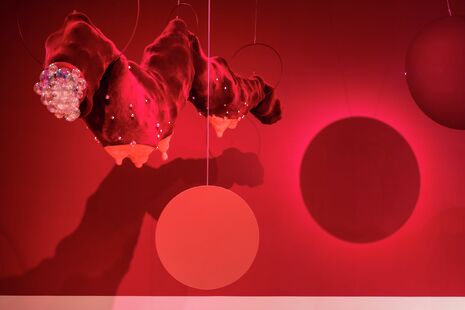The Turner Prize result is a performance piece
Esmee Wright finds much to admire in this year’s surprise decision to award the Turner Prize to all four nominees

The Turner Prize, awarded by the Tate for the most outstanding art exhibition or presentation by an artist living or working in Britain, has once more found itself at the centre of controversy. Just weeks after the Booker Prize brought (justified) outrage upon itself by making Bernadine Everisto, the first ever black woman to win the prize, share her award – against their own rules – with the far more established Margaret Atwood, the Turner Prize has been awarded not to one or two of its shortlisted artists, but to all of them. Though Everisto’s loss could be considered an overt insult, this situation was quite different: the artists requested the result themselves, sending the jury a letter pleading their case. But it has left many questioning what the point of the Turner Prize is in the first place. Why does such a prize exist if no one artist comes out on top?
The statement is certainly laudable, and more than a few people in the art world have come out to support them
In their letter, the four artists (Lawrence Abu Hamdan, Helen Cammock, Oscar Murillo and Tai Shani) stated their belief that attempting to judge between each of their entries would “undermine our individual artistic efforts to show a world entangled.” Each of the artists produced blisteringly political pieces this year. Abu Hamdan dealt with the aural memory of prisoners of the notorious Saydnaya prison. Cammock explored the underappreciated role of women at the start of the Irish Troubles. Murillo strengthened the concept of immigration as essential to world history (previously played with in an exhibition at Cambridge’s own Kettle’s Yard). And Shani created a world beyond the noose of patriarchy. As they wrote of their pieces, “...it would feel problematic if they were pitted against each other, with the implication that one was more important, significant or more worthy of attention than the others.”
The statement is certainly laudable, and more than a few people in the art world have come out to support them, including Jennifer Higgie, ex-directorial editor of Frieze Magazine and previous judge of the Turner Prize, who tweeted that “art is not a horse race”. However, others have been quicker to decry this move. One particular line of argument has emerged: in awarding all the shortlisted artists the prize, the jury have made it into little more than a “participation trophy”. This is a somewhat infantilising argument that denies these clearly political artists the clear thinking they gave the decision, instead implying that the jury abstained from making a choice in order to avoid hurting any feelings.

Others have argued that, as an art award, the Turner Prize should go to the best artist, not the artist making the most appropriate political statement,. This argument might seem sound – that is, until you cast your mind back to previous Turner Prize nominees. Tracy Emin’s bed was not shortlisted for her perfect technical skills. Damien Hirst’s Mother and Child (Divided) didn’t win in 1995 because it was pleasing to look at. They won for the boundaries of artistic understanding they pushed, and their advancement of ideas about the world in which we live. Modern art is almost undefinable. In choosing to form a collective, Abu Hamdan, Cammock, Murillo and Shani have forced us into the position of questioning the meaning of competition in art, and the idea of an absolute winner. I’d say that these four artists just turned the Turner Prize into the biggest piece of performance art imaginable.
In winning, the artists have divided up not just the prize money, but the associated opportunities
There is another element which I have seen rather less discussion of; in winning, the artists have divided up not just the prize money, but also the associated opportunities which come with it. Winning the Turner Prize always leads to an increase in the price of work on the art market (because yes, somehow, people do buy the sort of work that gets shown at the Tate or at other important contemporary galleries). Just off the back of her nomination this year, Helen Cammock has for the first time joined a commercial gallery. I am not suggesting this is a stitch-up on the part of the artists to reap the celebrity benefits that come with winning the Turner Prize. Or rather, I am, and also absolutely lauding them for it.
Shani makes the point that “If people aren’t paid properly in the arts then people can’t be artists.” The arts are notoriously difficult to enter, poorly remunerated and regularly both unthankful and unsuccessful. Artists, as much as we might want them to be mystical geniuses in a forest, exist in society. It might have been unintentional, but this move manipulates the rules of a competition designed, like our economy, to have winners and losers. Making it, instead, all about solidarity and supporting one another is, frankly, admirable.
 News / Clare Hall spent over £500k opposing busway 24 December 2025
News / Clare Hall spent over £500k opposing busway 24 December 2025 Comment / The ‘class’ of Cambridge24 December 2025
Comment / The ‘class’ of Cambridge24 December 2025 News / Caius mourns its tree-mendous loss23 December 2025
News / Caius mourns its tree-mendous loss23 December 2025 News / Girton JCR publishes open letter expressing solidarity with Palestine25 December 2025
News / Girton JCR publishes open letter expressing solidarity with Palestine25 December 2025 Comment / Yes, I’m brown – but I have more important things to say22 December 2025
Comment / Yes, I’m brown – but I have more important things to say22 December 2025










